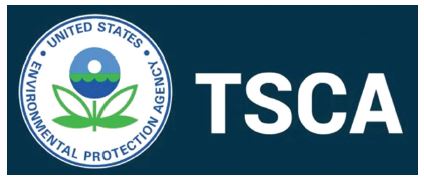Written on: September 1, 2023 by Nicholas Georges
Under the Frank R. Lautenberg Chemical Safety for the 21st Century Act, the U.S. Environmental Protection Agency (EPA) was required to select 10 substances to undergo the first risk evaluations under the revised Toxic Substances Control Act (TSCA). Since then, another 20 substances have been designated as High-Priority Substances and are undergoing risk evaluations. The EPA has struggled to meet the timelines for these reviews; however, it has mostly completed the risk evaluations and moved to the risk management stage, proposing regulations to manage unreasonable risks posed by these chemicals.

Companies using these compounds in their formulations should be aware of what is being proposed and what it means for their future use (or not). Here is where the EPA currently stands on a few of the first 10 chemicals:
Methylene Chloride
In November 2022, the EPA published a final revised risk determination for methylene chloride. After finding unreasonable risk for 52 out of the 52 conditions of use, with chronic liver effects being the most sensitive endpoint, the EPA determined that, as a whole chemical substance, methylene chloride presents an unreasonable risk of health injury.
In May 2023, the EPA proposed prohibitions for many of the uses of methylene chloride. This includes prohibiting its manufacturing, processing and distribution for all consumer products and most commercial and industrial applications. The EPA also proposed a workplace chemical protection program (WCPP), with exposure limits significantly lower than the permissible exposure limits (PEL) used by the U.S. Occupational Safety & Health Administration (OSHA) for the remaining allowed uses.
Notably, the proposal does not allow prohibited commercial and industrial applications to demonstrate compliance with the WCPP. The proposal does not include a de minimis level for allowing trace amounts of methylene chloride, so, as proposed, other substances may also be restricted as a result.
The EPA is currently reviewing the public comments and is expected to publish a final rule around June 2024. As proposed, the prohibitions related to consumer and commercial uses for manufacturers would take effect three months after the final rule’s publication, with additional time for products already in the supply chain to comply.
Perchloroethylene
In December 2022, the EPA published a revised risk determination for perchloroethylene. After finding unreasonable risk for 60 out of the 61 conditions of use, it determined that, as a whole chemical, perchloroethylene presents an unreasonable risk.
In June 2023, the EPA proposed to ban the manufacturing, processing and distribution of perchloroethylene for all consumer products and most commercial and industrial applications. Similar to methylene chloride, the EPA has proposed a WCPP that is significantly lower than the OSHA PEL for perchloroethylene; however, the proposal includes a de minimis level for perchloroethylene as a trace contaminant in other substances.
By the time this column is published, the public comment period for perchloroethylene will have closed; the EPA is expected to issue a final rule around August 2024. As proposed, the prohibitions for manufacturers would take effect 12 months after the final rule’s publication, with additional time for inventory in the supply chain to run out or be recalled.
Trichloroethylene, 1-Bromopropane & n-Methylpyrrolidone
The EPA published revised risk determinations for Trichloroethylene, 1-Bromopropane and n-Methylpyrrolidone, finding that all three substances present an unreasonable risk under their conditions of use.
During the next few months, the EPA will publish risk management rules to address the conditions of use that present an unreasonable risk of health injury. We can make an educated guess about how these rules will look based on the proposals for methylene chloride and perchloroethylene.
1,4-Dioxane
In July 2023, the EPA published a draft supplement to the 2020 1,4-dioxane risk evaluation, which evaluated risks from exposure to 1,4-dioxane as a byproduct in several manufacturing processes and risks to the general population from 1,4-dioxane in the air and drinking water.
Also in July 2023, the EPA published a draft revised TSCA Risk Determination; after finding unreasonable risk for 22 out of the 34 conditions of use, the EPA determined that, as a whole chemical substance, 1,4-dioxane presents an unreasonable risk of health injury.
Comments on the 2023 draft supplement and draft revised TSCA Risk Determination are due to the EPA by Sept. 8, 2023, ahead of the Science Advisory Committee on Chemicals (SACC) peer review meeting.
Review of the first 10 chemicals under the revised TSCA has taken longer than the statutory deadlines required; however, the end of this process is in sight. It’s important to stay up to date on this activity. Please contact me with any questions or for more information at ngeorges@thehcpa.org. SPRAY